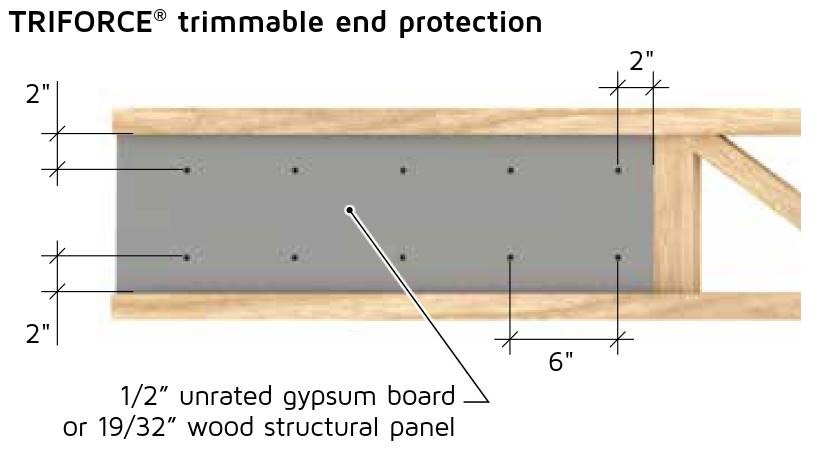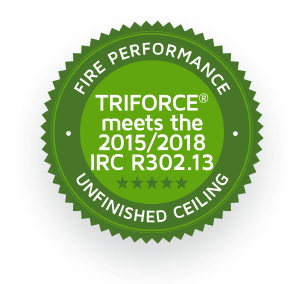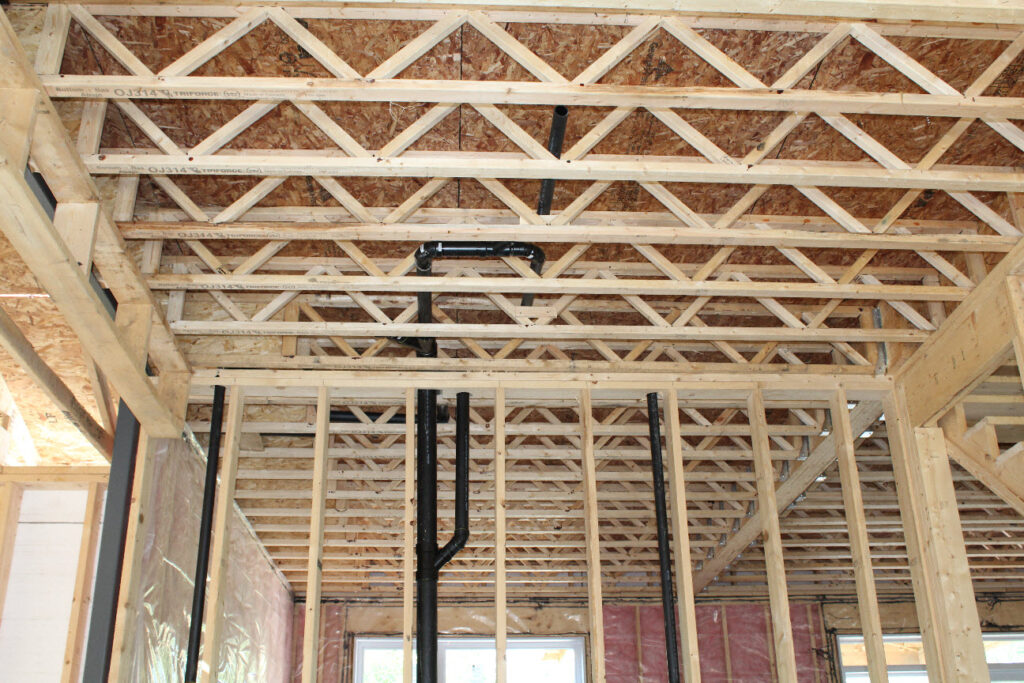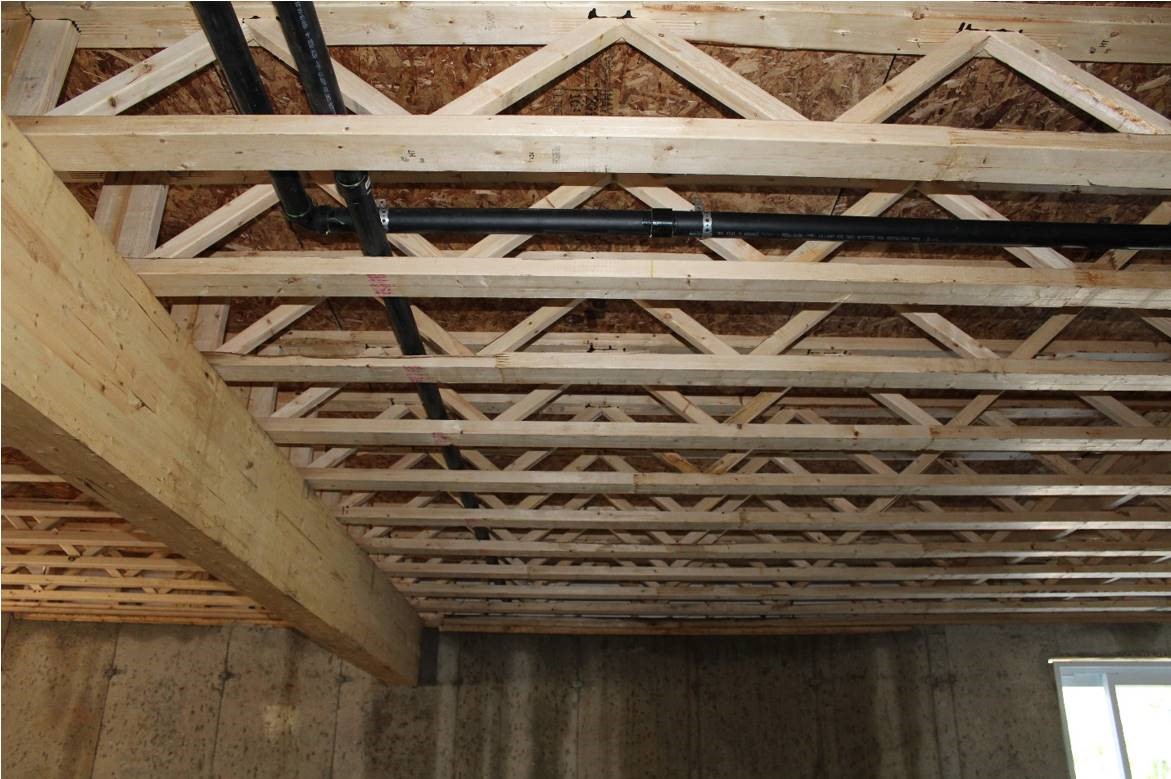When buying a home or especially when building a new home, it’s never too early to consider the possibility and/or options of someday finishing the basement. Below we’ll attempt to provide information to help with this decision.
New homeowners have their financial limits when it comes to adding any “nice-to-haves”. This may be a reason why basements are often left unfinished. Yet homebuyers have many reasons to extend that extra money to finish this often-neglected part of the home.
- Fire safety can be increased just by finishing the basement ceiling.
- It becomes additional living space and increases quality of life within the home.
- Finishing the basement increases the resale value of the home.
- Energy codes in many states now require insulation of basement walls, so why not continue the work that has already been started?
Even yet, the idea of a finished basement may still not be appealing. Outside of financial considerations, one of the biggest reasons is the ceiling. Or, more precisely, how the ceiling is built.
When building a better basement, start with the ceiling!
The ceiling structure in your basement could also be considered your main floor structure. They are generally one in the same. In one and two-family homes, the structural framing components that make up the floor (or basement ceiling) are typically wood. These wood components are referred to as joists and can be either solid wood i.e. 2×10 traditional lumber (for example) or, engineered wood i.e. I-joists or open web trusses. See open web floor system for reference.


You may have a joist choice when building a new home. If you are living in your home or buying an existing home you should be able to identify what type of joists you have. Unless, of course, your basement ceiling is finished in which case you are already on your way to having a finished basement.
IRC requirements for unfinished ceiling:
The International Residential Codes (2012, 2015 and 2018 versions) include a provision for fire protection of first-story floor systems in one and two-family homes. Local jurisdiction and fire code protection requirements must also be considered. Designers and builders must be aware of these requirements when creating living spaces.
For example, in areas where automatic sprinkler systems are mandatory, open ceilings are facilitated because floor systems over areas protected by sprinklers don’t require additional protection. In most localities, however, sprinklers are not required in single-family homes.
Most unprotected floor assemblies must have equivalent or greater fire performance than traditional or structural composite lumber of 2” x 10” nominal dimension. When using materials meeting this minimum requirement, no protective ceiling membrane is required by code. Yes, the result is an open ceiling but most, if not all, HVAC, plumbing and electrical will run below the floor structure… a situation less than ideal in a basement living space with already limited headroom clearance.
On the other hand, builders using many of the engineered wood joists on the market today such as I-joists, must approach fire code compliance differently. They require 1/2” gypsum board or 5/8” structural panel or an equivalent to the floor system’s underside. This, of course, eliminates the option for an open ceiling.
Unless, you or your builder has made the smart choice to use TRIFORCE® wood joist. In their unaltered state, TRIFORCE® open web joists provide sufficient fire resistance allowing for an open ceiling. The only modification needed is at the joist’s trimmable end. The remaining OSB at the one end must be sandwiched between two 1/2″ sections of gypsum board or 5/8″ wood structural panel per the detail below.

Find out more by downloading our fire-resistant solution brochure.
TRIFORCE® joists are an excellent alternative to nominal dimension lumber and I-joists for an open ceiling design. Not only can all the ductwork, electricals and plumbing easily fit into the ceiling space and create a more open and comfortable living area below, the installation time is reduced because there is no drilling or building additional structures to hide or cover duck work that is dropped below the joist.
Still can’t decide?
Even if as a home owner, home buyer or builder, you decide to finish the basement later, there is value in having a much easier job of it because of the type of joist being used. And, any realtor will tell you that a basement with a higher and unobstructed ceiling will help fetch a higher price for the home should you decide to sell down the road.
Find out more about how TRIFORCE® open joist can add value to your projects by downloading our complete spec guide or contacting us.



Very good explanation for cost consideration to finish basement.
There are additional considerations; the exterior wall needs to comply with fire requirements and also must resist Vapor transmission with out causing moisture internally. And finally the slab should also have appropriate thermal and vapor resistance. Once these additional considerations are included you will then have a quality living space.
Hi Joe,
Firstly, we would like to thank you for your interest in our blog and for taking the time to share those supplementary details with us. Considering our blog is dedicated entirely to TRIFORCE®, we have limited ourselves to explaining the options surrounding only the floor systems, but these are great points of discussion that certainly should be looked into!
Wishing you a great day!
The TRIFORCE® team
While an unfinished basement works great as extra storage space, your basement could be used much more effectively if it were finished. However you plan to use the extra space, a finished basement ensures your home’s lower level doesn’t go to waste.
Hi Irma Filler! Firstly,
We would like to thank you for your interest in getting news from TRIFORCE® open joist. We totally agree with your comment. However, the meaning of “finished or unfinished” in this article is regarding the workmanship of the ceiling of the basement with some materials as gypsum versus the option of letting the open joist visible. Considering only this aspect, you can have an “unfinished” basement ceiling and a pretty viable and enjoyable living space.
Regards,
The TRIFORCE® team
Wonderful information about the builders to finish or not to finish the basement, thanks a lot for sharing kind of content with us. Your blog gives the best and the most interesting information. I wonder if we can gather such practical information about it, a great post definitely to come across.